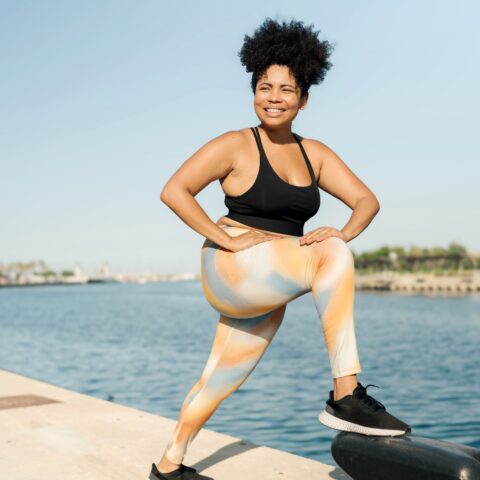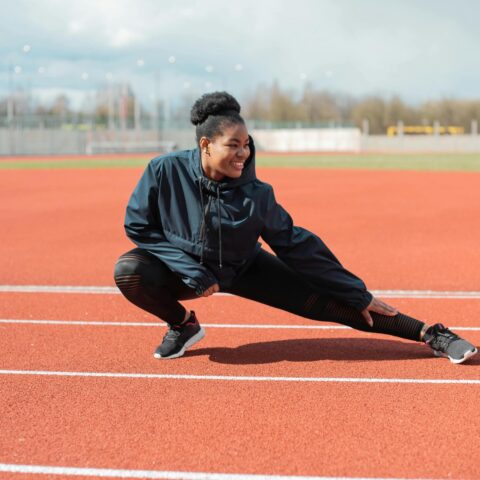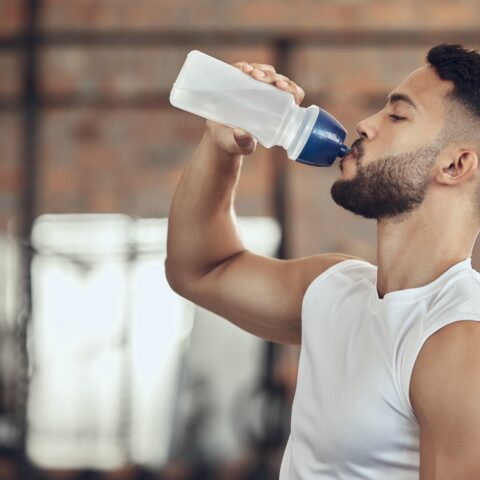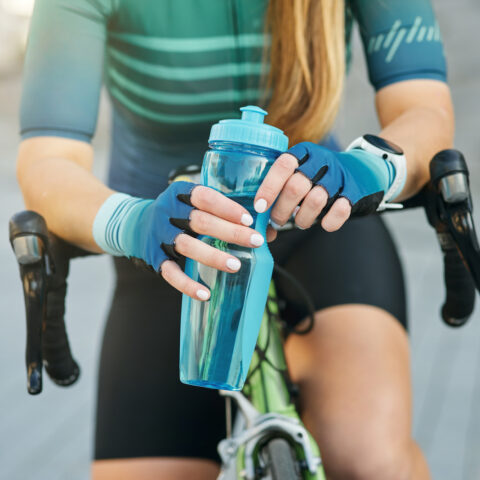Podcast: How the Standard American Diet Hampers Athletic Performance

Dr. Loren Cordain: I’m Loren Cordain, founder of the Paleo movement.
Shelley Schlender: And I’m Shelley Schlender. This is the Paleo Diet Podcast for July 2014.
Trevor Connor: My name is Trevor Connor and I am Dr. Cordain’s graduate student at Colorado State University. I was very interested in working with Dr. Cordain.
Shelley Schlender: Why were you interested in working with him? What led you to say, “I want to work with Loren Cordain?”
Trevor Connor: The short version of the story, which Dr. Cordain has heard many times is I took his class my first semester at CSU and I’d been studying traditional sports nutrition for a long time.
Shelley Schlender: Are you an athlete?
Trevor Connor: I am an athlete.
Dr. Loren Cordain: He’s world class athlete.
Shelley Schlender: Loren, do you want to say a bit more about that since he’s not going to brag himself?
Dr. Loren Cordain: No. He can tell you, he’s a member of the Canadian National Cycling Team for years. Now, he’s what, senior, or … I don’t know … what do they call it?
Trevor Connor: I’m a master’s rider.
Shelley Schlender: How old are you, if you’re a master’s rider?
Trevor Connor: About to turn 43.
Shelley Schlender: So you’re almost 43.
Dr. Loren Cordain: He looks like he’s about 23, doesn’t he? (Laughs)
Trevor Connor: The one thing I will say is, since I’ve been 40, I think I’ve lost the status this year because I’m not racing as much, but when I turned 40 I was the top ranked 40 plus rider in America for three years running.
Shelley Schlender: So you can pedal pretty fast.
Trevor Connor: I try. I manage a team of kids who can all beat me out pretty badly, so I keep it in perspective.
Shelley Schlender: Something about being an athlete and wanting high performance led you to be especially interested in the Paleo diet?
Trevor Connor: Well, like I said, I got to CSU and I took Dr. Cordain’s class and to be honest, I sat there in the class and just went, “This is wrong. I don’t believe any of this.” Because it was a contradiction of what I had been learning in classic sports nutrition.
Shelley Schlender: What, exactly, made you say “No way that this makes any sense.”
Trevor Connor: Well, in sports nutrition, you are taught, it’s all about carbohydrates, it’s all about grains.
[00:02:00]
The night before every race you should be having your big pasta party and all the things that are in direct contradiction of the Paleo diet.
Shelley Schlender: Well, first of all, Paleo diet doesn’t have grains in it.
Trevor Connor: Right. That was actually one of the big questions that I had and I was very glad I read the book that he wrote with Joe Friel.
Shelley Schlender: That’s “The Paleo Diet for Athletes.”
Trevor Connor: Correct. Joe Friel, actually has written one of the top selling books in the cycling world and definitely the top selling book in the triathlon world, so his focus is the endurance sport. But the hard part was I came in ingrained, you should be getting as many carbohydrates as you could and when I was racing professionally, I was always, “If I can get myself up to 70 percent carbohydrates today I’m going to race that much better.” So I was eating pasta every night. It was all grains. That was pretty much my diet. Grains and sugar. So when I took his class, I had a hard time with it. I took the class in the spring and spent that summer very arrogantly saying, “Well, I’m going to prove him wrong.” So I started reading the research. I read his research. I started looking up the papers on it and every time I would come across this … go through this stuff and go, “Okay, where’s the hole?” Go through it and go “Well, I can’t find one.”
Shelley Schlender: Loren Cordain, did Trevor tell you about all of his misgivings or did he keep this to himself?
Dr. Loren Cordain: Well he’s a pretty modest kind of guy. When he took the class he sat in the back row and I could tell he was taking it all in but he certainly never said anything negative to me during the class. I learned of the story later on, kind of like with the Joe Friel story, and Joe also was very skeptical of this idea and Joe did exactly what Trevor did was to set out to prove me wrong. Joe was very meticulous with keeping his training records and what have you. I said “Joe, give it a month” and he ended up finding himself performing better than he had I don’t know, four or five years earlier.
[00:04:00]
Shelley Schlender: Well then Trevor, when you started to decide that you didn’t see any holes in the Paleo argument, did you start eating that way?
Trevor Connor: That was the interesting thing. I actually accidentally went on the diet, is the way I can describe it. I apologize I described it earlier the way it is but one of the things to know about sports nutrition is there is a very high certainty of, “This is the way it is.”
Shelley Schlender: When you say a high certainty that “This is the way it is,” do you mean that it’s dogmatic?
Trevor Connor: It’s a little dogmatic. I manage a team of aspiring pros and I’ll sit there and talk to them about nutrition and they just go, “Well, we know you’ve been studying this for 10 years, but we’re cyclists. We eat pasta.” There isn’t always that open a mind in the sports world. There’s often a very high … and I had that ingrained in me, that this is the way it is.
Shelley Schlender: I like how you keep saying ingrained.
Trevor Connor: Yes. I’m sorry. (Laughter). But, as I was reading all of this and going through the research, as things just made sense, almost unconsciously I started modifying my diet and by that Christmas, I was looking at the way I was eating and realized I’m pretty much on the Paleo diet.
Shelley Schlender: Does that mean that you stopped eating grains, you stopped eating pasta, you started eating more fruits and vegetables, you had more fat and more basic non processed proteins?
Trevor Connor: I was eating a diet that, had I gone back to one of my old sports nutrition teachers a couple years earlier, they would tell me, “You can’t ride as a cyclist eating this. You’re not getting enough carbohydrates. You’re eating too much protein.” They would have all sorts of criticisms of it. But what I noticed that was very interesting was when I was racing full time and eating a traditional sports … what we were taught at the time for sports nutrition, and I should say sports nutrition is, fortunately, starting to change … I would get sick all the time.
Shelley Schlender: Would that mean when you got sick you catch a cold, you would have digestive problems, you would hit the wall?
[00:06:00]
Trevor Connor: I would have these very unusual … they were never so severe that they would put you in bed and you wouldn’t be able to do something, but they would definitely affect my training, they would affect my racing, and they would last two weeks. They definitely hampered my cycling career because I would get five or six of them a year. When they last that long, that’s a big part of your year. It was always a frustration for me and it was never something that I could, at the time, figure out. And I noticed, once I was pretty much on the Paleo diet, I stopped having them. I stopped having those issues. The reason I noticed this at Christmas was I went to visit my grandmother. I also do at New Year’s. And it’s your grandma. She’s going to feed you. You just say thank you. You eat what she gives you. And I got really sick while I was seeing her.
Shelley Schlender: Well, we’re all imagining what your grandmother fed you. You want to say what some of her favorite dishes are?
Trevor Connor: Well, my grandma loves things out of a can.
Shelley Schlender: Canned peaches?
Trevor Connor: A bit of that. More, for example, and I don’t want to get her in trouble. She tried really hard for me, but for example she said, “Oh I know you’re a cyclist, so you eat healthy, so I didn’t buy the boxed mac and cheese, I went to the supermarket and got the mac and cheese in the refrigerator section, because I know that’s healthier.” While I was visiting her it was a lot of mac and cheese, a lot of … she was constantly trying to give me candy because she knew I liked candy. It was not a healthy diet.
Shelley Schlender: Let’s see. Mac and cheese. Grains and dairy.
Trevor Connor: Right.
Shelley Schlender: Candy is candy.
Trevor Connor: Right. I got sick while I was there. I came home and went right back to eating pretty much a very strict Paleo diet, expecting that, I know how this feels, it’s going to give me another one of these two-week bugs and it was cleared in a day. And so I actually started to experiment and went, “Okay, I’m going to go out,” went out, had some McDonald’s, ate bad.
[00:08:00]
Shelley Schlender: Ate American.
Trevor Connor: Right. And the bug came back.
Shelley Schlender: Do you know whether you are a person who has some celiac kind of vulnerabilities or that your body has trouble with dairy in terms of your food sensitivities?
Trevor Connor: I’ve never actually been tested but I do know now how dairy affects me. It certainly wouldn’t surprise me if I had intolerances because it does, certainly have a big impact on me now when I eat it.
Shelley Schlender: Hey, what happened to your performance when you were racing?
Trevor Connor: Well, so that was the interesting thing because when I came to CSU, I was 38, and said my cycling career was over. I’ll have some fun, I’ll race locally. In 2009, that was certainly the case. I went to a couple big pro races and I couldn’t hang on in 2009, so I was certain I was done. So 2010 was when I was on the diet and the two things that I noticed was, for the first time in my cycling career I didn’t have these bugs. Next thing I noticed was my energy level. It was very, very different. Back when I was racing full time, I had to be eating every hour or every couple hours.
Shelley Schlender: Or else you would hit the wall.
Trevor Connor: I would hit the wall. And when I was out on a ride I had to eat a lot. The amazing thing I found was my energy stayed very constant through the day. One of the amazing things I could do was get up in the morning, eat almost nothing, go for a four, five hour ride and I would not bonk. I wouldn’t get tired.
Shelley Schlender: Well, that means that your body is more adapted to burning fat now than it used to be.
Trevor Connor: Right.
Shelley Schlender: You’re pretty skinny. You’re not at all fat, but you still have body fat.
Trevor Connor: Even a cyclist, who tends to be a very low percentage of body fat, the actual, the amount of calories they still have stored in fat is quite high.
Shelley Schlender: Something like 30,000.
Trevor Connor: Right. What I had heard was you could technically go for .. what is it … a couple weeks on the body fat that they still have available to them.
[00:10:00]
Shelley Schlender: And so instead of being somebody who is locked into only burning carbs, your body, on a Paleo diet, got more flexible and could change fuel sources without you bonking.
Trevor Connor: Exactly. There was a big, six day stage race called the Cascade Classic up in Oregon that I’d done every summer and I had never gotten to the end of that race feeling good. By the last day I had always been exhausted and run down. When I had gone in the past, I was always, every night I was having the big plate of pasta and all the things that you’d been taught. So in 2010 when I went to the race, I was having a big piece of salmon and vegetables, and I was staying with a bunch of friends who had their giant vat of pasta going and they were looking at what I was eating and going, “What’s wrong with you?”
Dr. Loren Cordain: (Laughs)
Shelley Schlender: Loren Cordain, what do you want to say about that?
Dr. Loren Cordain: I’ll just let Trevor continue. I’ve heard this story before.
Trevor Connor: I got to the final day and it felt like I hadn’t been racing. It did not feel like I had done … and I was back to being competitive with the pros again, and almost had my best stage ever at that race on the final day. There was a big attack. I broke away with a couple Garmin riders, which is now one of the big pro teams.
Shelley Schlender: That’s the team run by …
Trevor Connor: Are you talking about Dr. Íñigo San Millán?
Dr. Loren Cordain: You know what? He’s my graduate student.
Trevor Connor: Mm-hmm (affirmative).
Dr. Loren Cordain: As is Trevor. So Íñigo San Millán was my graduate student.
Shelley Schlender: He is a very well-informed guy.
Dr. Loren Cordain: A very bright guy.
Shelley Schlender: But he still recommends a high carbohydrate diet to athletes, I believe.
Dr. Loren Cordain: I think he still is kind of on board with the old school of thinking.
Shelley Schlender: Is it the case that Íñigo was encouraging his athletes to load up on carbs?
Trevor Connor: I’m going to get myself in big trouble for this one and probably put a big qualifier on this one, but I did have that conversation with him and he says he’s still very much more towards the classical sports nutrition but he did send to me a document of the recommended diet for Garmin.
[00:12:00]
I did briefly have this conversation with him, of looking at it and saying “Well, this is pretty close to the Paleo diet.”
Shelley Schlender: Less carbs, more animal foods, less grains, less sugar.
Trevor Connor: It was for differing reasons, but it definitely said you need to get away from the grains because they’re low nutrients, so you need to focus more on eating a lot of fruits and vegetables. It does say right around the event, you need to get the simple sugars in you, but once you get away from the event, focus on the complex carbohydrates, focus on fruits and vegetables. It does talk about eating a lot more high quality proteins.
Shelley Schlender: Well Trevor Connor, in your case, were you carb loading as part of your competing in this race? Were you making sure you’d had a lot of sugar before the race started or did you just eat Paleo the whole way through?
Trevor Connor: I ate what’s basically recommended in “The Paleo Diet for Athletes.” In the middle of the race, I tended to eat more traditional sports nutrition, so I would have my sports drinks, I had my Cliff blocks. You unfortunately don’t have a choice. You’re going that hard, you’re body’s shutting down. If I tried to put anything besides simple sugars into my stomach it just can’t handle it. I’m particularly that case. I just have problems eating during a race.
Shelley Schlender: Your digestion just goes to pot?
Trevor Connor: My digestion goes to pot, so at that point, you go, “This is about finishing the race. I’m going to put in my body whatever I can put in my body to get me to the finish.”
Shelley Schlender: But you had conditioned yourself on a Paleo diet instead of carbs.
Trevor Connor: Right. But as soon as I was done with the race, I was right back to the Paleo diet. I have the whole analysis of it, and I can show you on how much my diet dropped in terms of the percentage that came from carbohydrates. You saw a rise in the protein I was eating.
Shelley Schlender: How about the fats? Salmon is a very fatty fish.
[00:14:00]
Trevor Connor: Fats were up as well.
Shelley Schlender: Fats were up.
Trevor Connor: But it was more a shift away from … in the past I was completely focused on ratios. I would just look at my ratio. I need 70 percent carbohydrates when I’m at a race. Now it was, I didn’t really care about the ratios and it was more, what are the foods I should be eating and what are the foods I shouldn’t be eating. And I was focusing on high quality nutrient dense more natural foods and getting away from the dairies, getting away from the grains.
Shelley Schlender: Well, when you were racing against those Garmin racers, who won?
Trevor Connor: Well, the unfortunate side of it was we broke away, we were coming down a hill really fast and there were a bunch of spectators on the side and a kid reached out to take a picture of us. There was a Garmin rider right in front of me. The camera smashed on the Garmin rider, took the Garmin rider down, I flipped over to him and landed on my back on the curb. It was not the most pleasant experience. So by the time I got back up the field had passed. I got back on my bike. The Garmin rider never got back in. I chased back to the field, but it had taken such a toll on me. I was able to finish with the lead group, but my chance of going for a big win, but that’s bike racing.
Shelley Schlender: Well, up until the point that the child reached out with the camera, you had been in the lead or close to it?
Trevor Connor: It was about four of us who had broken away. Whether we could stay away or not is a whole ‘nother story, but I was feeling very good. Typically on that stage, in the past, I would have been hanging on for dear life, just trying to finish. That was the first time I had gone on this stage and went, “Yep, I can get away. I can match anybody here.” It was the first time I’d ever felt that way.
Shelley Schlender: Loren Cordain, do you want to have any comment more about Trevor Connor’s experience here for your Paleo listeners?
Dr. Loren Cordain: I think that what he says is fairly typical.
[00:16:00]
Joe Friel, he’s done this for a lifetime. He’s a coach. He works with national, international caliber athletes, he’s got one story after another. He sent me a list and I had no idea the number of world class performers that are operating on Paleo right now. He gave me the list. Trevor probably knows them. It’s just amazing. They have people that have won the Iron Man. People that have … the Western State’s 100 …
Shelley Schlender: Now, the Western State 100 was won by Tim Olson.
Dr. Loren Cordain: Yeah.
Shelley Schlender: Which is a hundred mile race.
Dr. Loren Cordain: Yeah.
Shelley Schlender: He won it. You could call it a Paleo diet, but he was eating a high fat, low carb diet. He was eating, a very high fat diet.
Dr. Loren Cordain: I think that you can call it what you will but …
Shelley Schlender: Is that a form of Paleo for you?
Dr. Loren Cordain: Friel and I wrote about this in the book and it’s just what you alluded to earlier with Trevor is that it’s utilizing the beta oxidation pathways. In other words …
Shelley Schlender: Fat burning.
Dr. Loren Cordain: Fat burning, exactly. There’s a compound inside muscle called intramuscular triglyceride. When you eat carbs all day long, that pathway, the intramuscular triglyceride isn’t used, yet it becomes a very labile source of ATP.
Shelley Schlender: What’s labile?
Dr. Loren Cordain: Labile means that it can be readily used, but it can only be readily used if the enzymes that up regulate the beta pathway are being utilized. So, it’s kind of like if you don’t use it you lose it. If you eat carbs all day long, those enzymes that allow us to take the triglyceride, the fatty acids, and run them into the metabolic pathways that generate ATP, they don’t work very well. It’s kind of like, if you don’t train them, you lose them. This isn’t anything new. Physiologists have known about this for at least 10 or 15 years, right Trevor?
Trevor Connor: Yep.
[00:18:00]
Dr. Loren Cordain: It’s just the application of it is like, “Hmm, well we’ve been so – no pun intended – ingrained with eating grains, we didn’t get it.” It’s like, you’ve got to train both pathways. That’s exactly what Trevor is saying. That’s what Friel and I wrote about when we wrote the first book in 2005, was let’s get the best of both worlds. Let’s, during training, force the system to use more fat and less carbs, and so by doing that you get a diet that has less carbs, more protein and more fat. You can call it whatever you want, but that’s the concept. Paleo is just a moniker. You can call it whatever you want, but that’s the concept. Stop eating all those grains, stop eating all those refined sugars, and when you start getting your carbohydrates from fruits and vegetables, then it immediately lowers the stores of muscle glycogen, and it forces muscle then to use intramuscular triglyceride, up regulating all those multiple enzymes that allow triglyceride to get into the Krebs cycle.
Shelley Schlender: So that means get the fats that you’ve been eating and the fats that your body has made and get them to the place where they can be burned for fuel to make your muscles run really fast.
Dr. Loren Cordain: Yeah, and then the other trick that Friel kind of figured out … Joe is a very bright guy and he knows the metabolic pathways. He’s working with these athletes on a day to day basis so he knows everybody and they all know him because of his writings. The trick that he kind of figured out is what Trevor alluded to is that during race day in the preparation just before race day, during the race and after the race, you got to go back to the 21st century and start eating the crap foods. Because that allows you to load your muscles up with glycogen, so when you enter the race, you got two things that are going on. You maximize muscle glycogen and two, you maximize beta oxidation pathways.
[00:20:00]
Everybody loses glycogen, no matter who you are and by the middle to the end of a race, even if you’re sucking down athletic drinks, the glycogen starts being depleted. There’s no way you can get around it. What happens is that if you can use more fat and less carbohydrate then at the end of the race you have more carbohydrate, and if you have more carbohydrate, you can exercise more intensely. That’s the simple logic of the Paleo diet.
That’s all for this addition of the Paleo diet podcast. Visit my website, thePaleodiet.com, past episodes and for hot links to the experts and studies that we talked about today.
Shelley Schlender: Our theme music is by Chapman Stick Soloist Bob Culbertson.
Dr. Loren Cordain: If you want to send me question or comments, place to go is ThePaleoDiet.com.
Shelley Schlender: For the Paleo Diet Podcast, I’m Shelley Schlender.
Dr. Loren Cordain: And I’m Loren Cordain.




